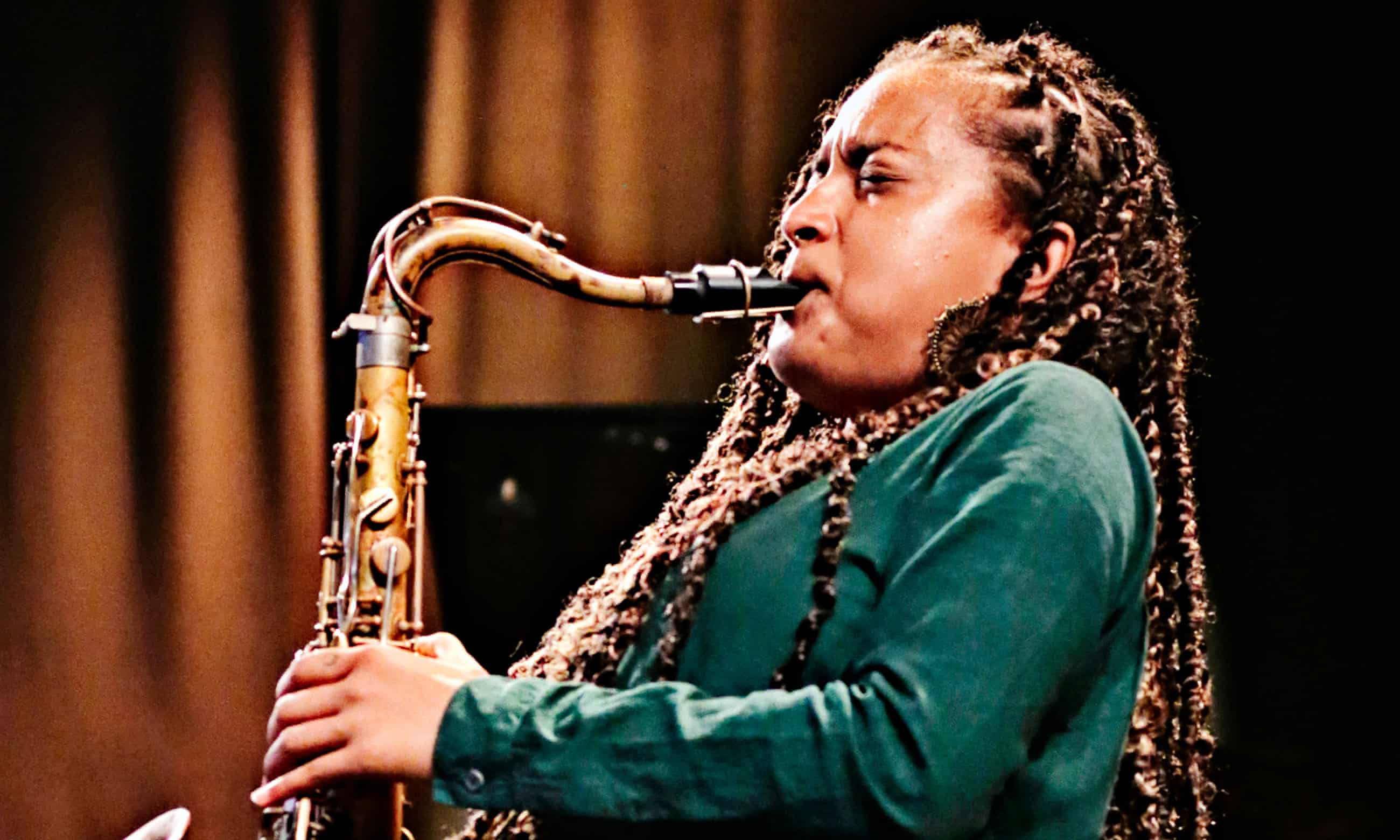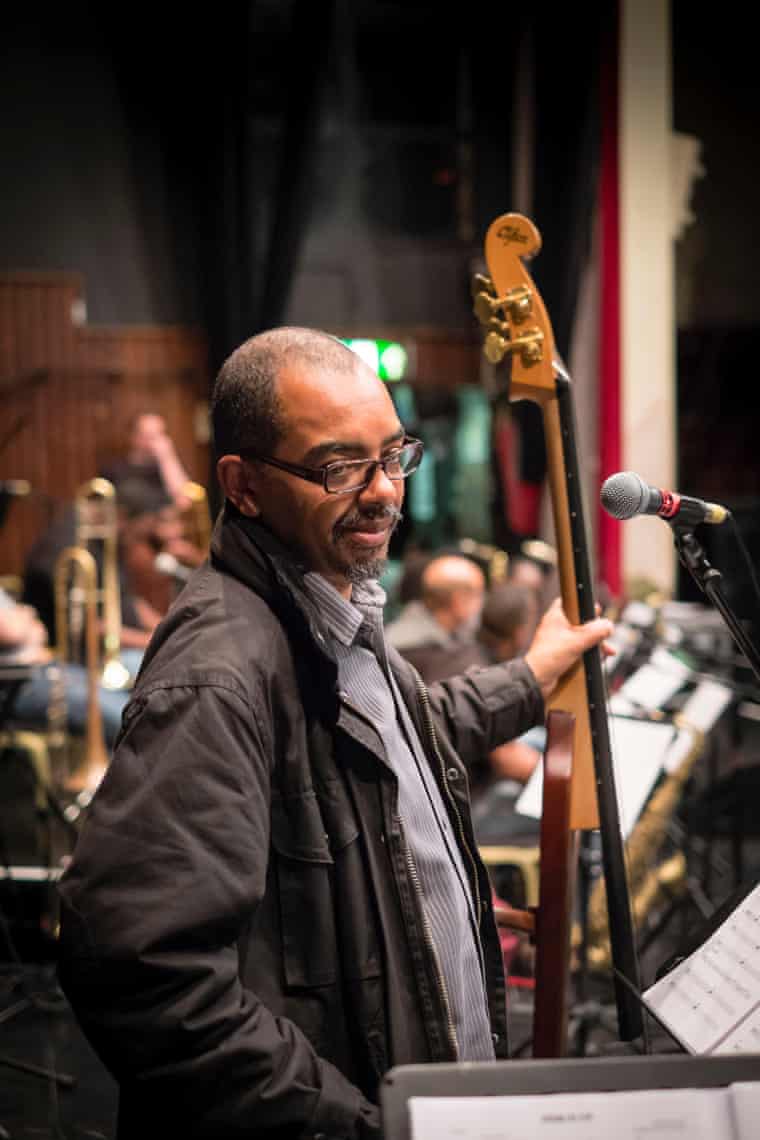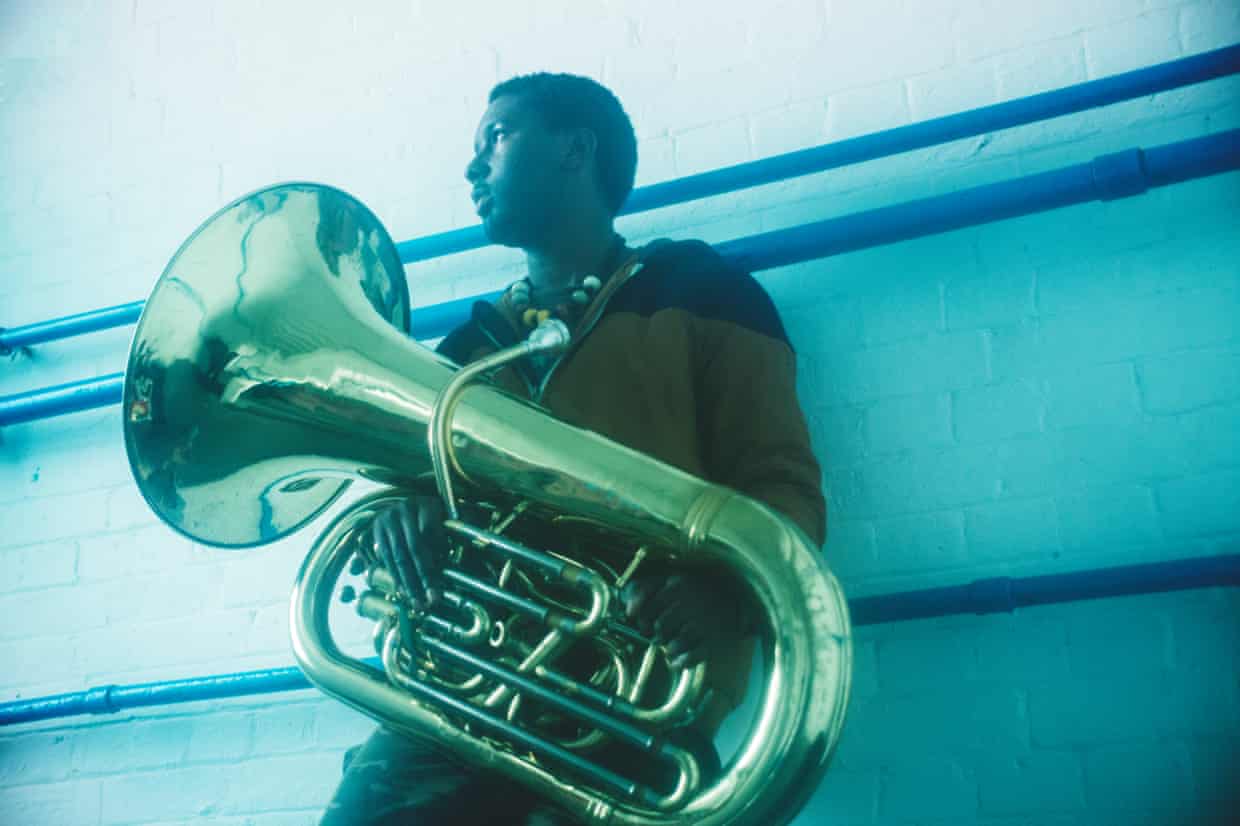
Jazz
Add some township jive! How London's jazz scene set itself apart
The city’s young jazz community has flourished by drawing on everything from hip-hop to calypso and highlife, creating a unique cosmopolitan sound
by John LewisAlthough its live scene is currently on pause, jazz has been thriving throughout London, with names such as Shabaka Hutchings, Nubya Garcia and Binker and Moses all attracting attention and media coverage around the world. But what is not often remarked on is how utterly un-American these British musicians sound: listen to their music and you’ll hardly hear any swing or bossa nova rhythms, the usual pulse of American jazz. You won’t even hear that much funk, the rhythm that has been the vehicle for most “fusion” over the past 50 years. Instead, a generation of Londoners – who I spoke to before the coronavirus crisis – are redefining jazz in a different accent.
“What sets us apart from American jazz at the moment is that British jazz musicians are having a musical conversation with Africa and the Caribbean,” says tenor saxophonist Shabaka Hutchings, whose myriad projects (the Comet Is Coming, Sons of Kemet, Shabaka and the Ancestors) have made him a figurehead of the London scene. “Dub, dancehall, calypso, soca, Afrobeat, highlife, township jive, nyabinghi – all put through the filter of rave and house and hip-hop. I don’t hear that so much when I listen to American jazz.”
Rhythmically, this cocktail of sounds is not entirely without precedent. Two-tone bands in the early 1980s were experimenting with a similar blend, in particular the Beat’s drummer Everett Morton, who was playing reggae, calypso and Afrobeat in the context of a post-punk band. By the late 80s, Django Bates’s big band Loose Tubes were creating a whimsical British jazz that borrowed heavily from South Africa and Brazil, while Courtney Pine and the Jazz Warriors were injecting reggae and calypso music into hard bop – a fusion that would be explored more explicitly with Gary Crosby’s Jazz Jamaica big band.

“Gary Crosby has been an incredible influence on a new generation of British jazz musicians,” says Patrick Boyle, drummer with the Mercury-nominated SEED Ensemble and several other outfits. “He set up Tomorrow’s Warriors, which has been a breeding ground for dozens of musicians over the last 20 or 30 years. But there are other influences that have fed into the London jazz scene – one of the things that you didn’t really get in the States is the influence of the South African expatriate community in the 70s.”
He adds that for drummers, “you’re defined by how many styles you can replicate with authenticity. Nowadays, if you want to survive as a jazz drummer in London, you have to check out reggae, soca, calypso and Afrobeat.”
Afrobeat has started to play a key role in this blend of rhythms. Many of the current British jazz wave studied at Trinity Laban in south-east London, a music college that was attended by Fela Kuti between 1958 and 1961. Cassie Kinoshi, the alto saxophonist and leader of the SEED Ensemble, was a Trinity student who was disappointed that Fela’s music was not even mentioned on the school’s curriculum.
“Cassie always made a point of performing Fela’s music at college for big performances,” says Boyle. “But Fela’s music is something that loads of young British musicians have got into independently. I remember finding his albums in the record library when I was in high school. A few years later I remember going to a Red Bull drumming masterclass with Fela’s drummer Tony Allen, and loads of other London drummers were there – including Moses Boyd, Femi Koleoso and Eddie Hick. For all of us, Tony Allen is as important as, say, Max Roach or Tony Williams. Songs such as Zombie and Colonial Mentality are jazz standards to us.”
The multicultural nature of London life has had a very obvious effect on the music made by this generation of musicians. “We’ve all grown up in London, and these rhythms have just seeped into us,” says tenor saxophonist Nubya Garcia. “It’s happened from listening to our parents’ records, or from going to Carnival, or to dub nights, but it can also be the sounds you hear when you’re walking past a car, or in a local shop, or listening to what kids on the bus are playing on their phones.”
It’s tempting to see the family backgrounds of many of these musicians as crucial to the development of this music. Garcia’s parents come from Guyana and Trinidad; Cassie Kinoshi has Nigerian, Sierra Leonean and Caribbean ancestry; drummer Femi Koleoso comes from a Nigerian family; tuba player Theon Cross’s parents come from Jamaica and St Lucia; Shabaka Hutchings spent much of his childhood in Barbados; Binker Golding’s mother comes from Grenada. But it’s not just heritage that is influencing this music.

Patrick Boyle, for instance, comes from an Irish and Czech background, while trumpeter Emma-Jean Thackray – who released new single Brand New last month – grew up in an almost completely white village in rural Yorkshire and got into Afrobeat via Talking Heads. “In my naivety I assumed that David Byrne had invented this music!” she says. “But it was through that album that I started exploring Fela and Ghanaian highlife and other African music. And, since moving to London, you start to hear so much music from all over the world – this is a place where people are allowed to flourish and share their music with everyone.”
Guitarist Shirley Tetteh, who plays with Nubya Garcia in the septet Nérija, is reluctant to draw direct connections between her heritage and the music she makes. “A lot of people will make a connection between my guitar style and Ghanaian highlife, assuming this comes from my Ghanaian family,” she says. “And there is possibly is some subliminal influence. But I’m very careful when talking about this. People stop seeing you as a musician and see you just as a Ghanaian. And I don’t want to insult people who spend a lot of time mastering Ghanaian music. For me, it’s about getting into very specific genres with respect, be it the funeral music of northern Ghana, or Jamaican nyabinghi music, or Malian kora music. I know that there are jazz drummers on the scene who are really into drill music, for instance. These are all serious genres that have a complex history.”
This palimpsest of Caribbean and African rhythms can have a curious effect on jazz audiences. Older jazz crowds – who miss the reassuring pulse of swing, bossa or funk beats – will often be baffled when they hear musicians soloing over these lopsided polyrhythms. But for a generation who have grown up with Latin-derived pop genres such as reggaeton, this music is very dancefloor friendly – frustratingly so, if you’re now listening to it in lockdown. You see young audiences responding to that dominant 3/3/2 bounce – an eight-beat phrase that emphasises the first, fourth and seventh beats, the same rhythmic pulse common to big recent hits such as Despacito or Shape of You.
Clearly, such rhythms have also altered the way in which jazz musicians improvise and compose. “When you’re playing over certain Afrobeat rhythms, for instance, you tend to play in a more staccato style,” says Shabaka Hutchings. In Sons of Kemet, he says, he tends not to play “the kind of flowing, narrative lines” used in the classic US mid-century bebop style. “I’ll be playing free, or drawing from the chant-like qualities of nyabinghi music. I tend to improvise in different ways in all of the different line-ups I lead. With Shabaka and the Ancestors, I’m working in the vocabulary of South African music, which is quite vocal-derived. But, in the Comet Is Coming, I’m playing over electronic rhythms, which force me to play at a high intensity. It also forces you to embed yourself within the rhythms but also fight against them, moving between sustained lines and very rhythmic playing.”

Binker Golding, a tenor saxophonist who plays with drummer Moses Boyd in the duo Binker and Moses, has also taught many of these musicians as a tutor with Tomorrow’s Warriors. “Even if you’re a surrealist at heart, as I am, there are rules,” he says. “You might be playing something interesting, but if it’s not in the correct context, it’s garbage! For instance, if you’re playing over a dancehall beat, the horn parts are often dependent on the lyrical nature of dancehall. You’re playing like a dancehall vocalist, a style that’s marked by repetition and interlocking rhythms – it’s almost as if the sax is part of the drum kit. And that’s not part of American jazz at all. But it’s part of the London scene, via the Caribbean.”
Thackray also draws distinctions between US and UK jazz. “American jazz still thinks that blending hip-hop with jazz is something quite radical. Here, in London, that’s taken as read. I’ve always been influenced by the way in which, say, MF Doom constructs his phrases, using his rhythmic intonation to inform my own solos. A lot of British jazz musicians do this – it’s part of our musical DNA, just as reggae and Afrobeat is. Americans struggle with that.” She remembers how she played with an American drummer in New York after her UK drummer couldn’t make the trip. “He was very good, and it sounded fine in the end, but it was very different – he couldn’t really get that Caribbean two-step thing that I wanted.”
That’s not to say that this is music that has no American ancestry. “The irony is that dozens of these players came through the Trinity Laban jazz course, which was very bebop orientated,” says Thackray. “That grounding remains strong.”
“If you listen to any of us practise, you’ll hear a hell of a lot of bebop,” says Garcia. “That’s what you might hear when I’m jamming with other members of Nérija. I can certainly play bebop over swing rhythms if I choose – it’s just that I make a conscious decision not to do so on stage.”
Golding concurs, insisting that his duets with Boyd are directly inspired by classic duets between John Coltrane and Rashied Ali, Dewey Redman and Ed Blackwell, and Pharoah Sanders and Max Roach – even if the swing elements have been removed. Boyle acknowledges dozens of key American influences – not least a 1958 Ahmad Jamal track called Poinciana, where drummer Vernel Fournier seems to be subtly melding New Orleans and Caribbean influences. “It shows you that you can see glimmers of what we’re now doing throughout jazz history,” says Boyle.
American jazz traditions have also remained at the heart of the Tomorrow’s Warriors weekend schools that so many of these musicians attended. “Tomorrow’s Warriors had an approach to jazz that I really loved,” says Tetteh. “They didn’t divorce it from its American history, from notions of slavery and segregation. People such as Gary Crosby made it clear that jazz is very much an aural tradition, one that’s not just taught academically, but something that is experienced and absorbed. The community aspect is hugely important.”

Curiously, the one explicitly American area of music being explored by many British jazz musicians at the moment is the century-old traditional music of New Orleans – not least its marching-band tuba. Ben Kelly, Oren Marshall, Theon Cross: all have managed to make this seemingly antiquated instrument work in a modern context. “Theon’s music makes perfect sense when you listen to a lot of electronic music,” says Boyle, who is currently touring in Cross’s band. “You listen to grime, drill, trap, bounce – a lot of the basslines and sub-bass frequencies make perfect sense when played on a tuba. It becomes this thread linking ancient and modern.”
“Theon knows his traditional New Orleans jazz history back to front,” says Golding, who taught Cross in Tomorrow’s Warriors. “He can play you every tuba solo on every old Louis Armstrong 78 [rpm record]; he knows his New Orleans dirges. And it’s the same with musicians such as Moses and Nubya and Shabaka. They’re heading into the future, but they all know their history and they know how to use jazz as a key to unlock and interpret dozens of other forms of music. I’m now teaching a generation of musicians who want to be the new Shabaka or Nubya, and I have to explain that if you want to play like them, you’ve got to understand your history!”
What’s exciting is that with their cosmopolitan vision of jazz, this London generation are not just understanding history – they’re making it.